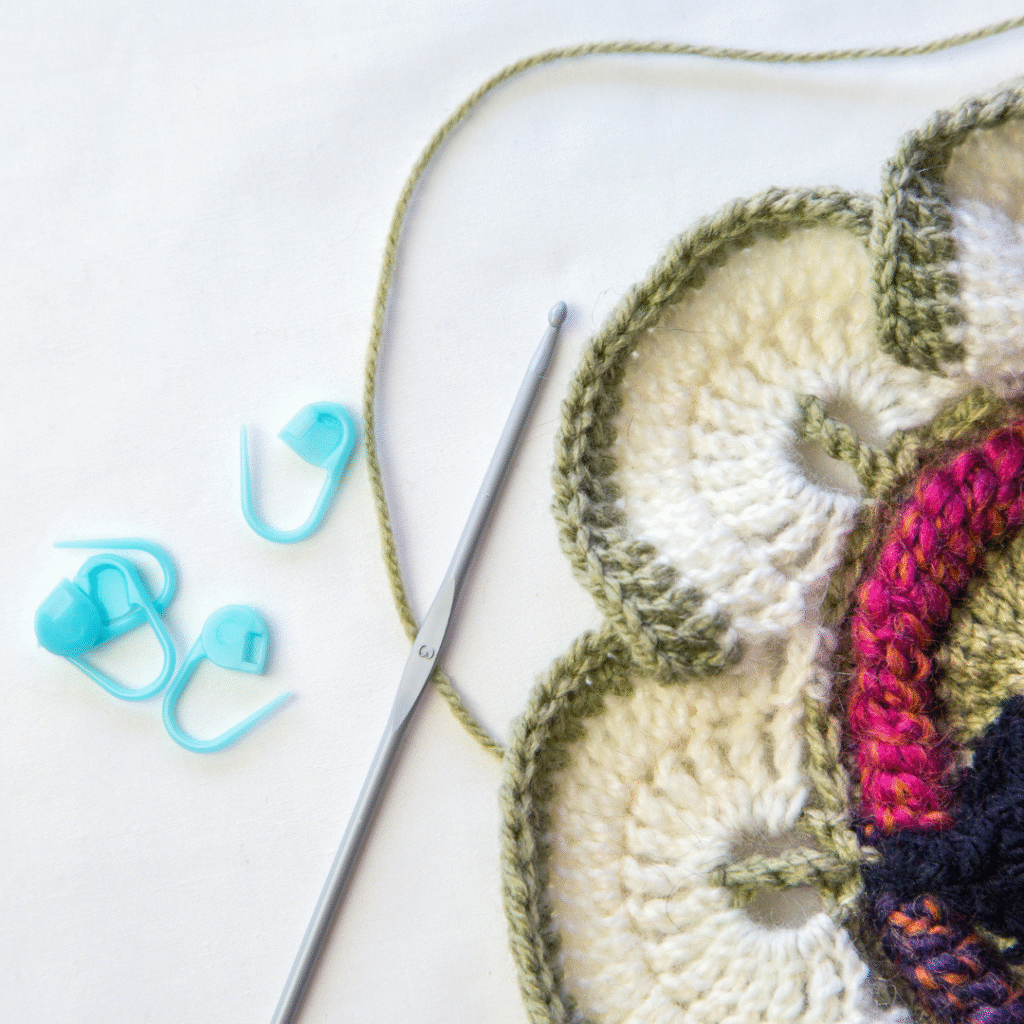Using stitch markers for crochet can make your projects much easier and more enjoyable. These small tools help you keep track of stitch counts, mark the beginning of rounds, and avoid mistakes in complex patterns. Beginners and advanced crocheters alike find stitch markers for crochet essential when working on intricate designs, such as lace, amigurumi, or multi-colored projects.
Not only do stitch markers for crochet prevent frustration, but they also save time by allowing you to focus on creating beautiful patterns rather than constantly recounting stitches. Whether you prefer locking markers, split rings, or reusable plastic markers, incorporating stitch markers for crochet into your toolkit ensures more accurate and professional results in every project.
| Type of Stitch Marker | Best Use | Advantages | Tips |
|---|---|---|---|
| Locking markers | Mark rounds, complicated patterns | Easy to attach/remove, secure | Ideal for lace or amigurumi |
| Split ring markers | Mark single stitches or increases | Small and lightweight | Great for counting rows without bulk |
| Plastic reusable markers | Beginners, general use | Affordable, colorful | Use different colors for different purposes |
| Safety pin-style markers | Mark stitches temporarily | Flexible, inexpensive | Perfect for quick adjustments in large projects |
| Magnetic markers | Crochet on metallic surfaces | Reusable, easy to reposition | Useful for keeping track of multiple sections |
In the world of crochet, where intricate patterns come to life with a single hook and a strand of yarn, there exists an unsung hero: the humble stitch marker. Often overlooked in favor of a new yarn color or a beautiful hook, these small, unassuming tools are the silent sentinels of your project, safeguarding your progress and preventing countless moments of frustration. Far from being a crutch for beginners, stitch markers are an essential component of any crocheter’s toolkit, from the novice struggling with a spiral to the expert crafting a complex garment.
So, what exactly is a stitch marker and why is it so important? At its core, a stitch marker is a simple device used to mark a specific location in your work. Its purpose is to provide a clear, visual cue that eliminates the guesswork from your crafting. The true value of a stitch marker, however, lies in its versatility and its ability to solve some of the most common crocheting dilemmas.
The most frequent and critical use of a stitch marker is to denote the beginning of a round. For projects worked in a continuous spiral—such as amigurumi, hats, or seamless baskets—there is no turning chain to indicate a new row. Without a marker, you’d quickly lose track of where one round ends and the next begins, leading to an uneven spiral, an incorrect stitch count, and a final product that just doesn’t look right. Placing a simple marker in the very first stitch of each round acts as a constant landmark, ensuring your counts are accurate and your work remains perfectly aligned.

Beyond the beginning of a round, stitch markers are invaluable for shaping and complex patterns. When you’re increasing or decreasing stitches for a hat crown, an armhole, or a decorative element, a marker can be placed in each key increase or decrease stitch. This allows you to quickly locate these points in subsequent rows without having to recount your work, saving you precious time and effort. Similarly, for large projects like blankets, you can place a marker every 50 or 100 stitches to keep track of your progress and avoid the tedious task of counting hundreds of stitches in one go.
They are also a godsend for identifying the right or wrong side of your work. Some stitches, like the lemon peel stitch or certain ribbing patterns, can look very similar on both sides. Placing a small marker on the “right side” of your work at the beginning of the project ensures you’re always working your stitches in the correct direction, which is vital for maintaining the intended texture and appearance.
The variety of stitch markers available today is a testament to their importance. The most popular are locking stitch markers, often resembling tiny plastic safety pins. These are incredibly secure and won’t fall out of your work, making them ideal for amigurumi or other projects that get a lot of handling. Split ring markers, on the other hand, have an open design that allows them to be quickly slipped on and off a stitch, perfect for temporary marking. Circular ring markers are designed to sit directly on the hook, acting as a reminder or a marker for a section rather than a specific stitch. And for those in a pinch, anything from a bent paper clip to a small loop of contrasting scrap yarn can serve as a makeshift marker.
When using stitch markers, a few simple tips can make all the difference. Choose a color that stands out from your yarn to ensure it’s easy to spot. Be consistent in your placement—if you mark the first stitch of a round, always mark the first stitch. And most importantly, don’t be afraid to use them liberally. A few extra moments spent placing a marker can save you hours of unraveling and re-crocheting later.
In the end, stitch markers are more than just a convenience; they are an insurance policy for your hard work. They are the silent, steadfast companions that hold your project together, allowing you to focus on the rhythm and joy of crocheting without the constant worry of losing your place. They are small tools that lead to big victories, turning potential frustration into pure crafting satisfaction.

